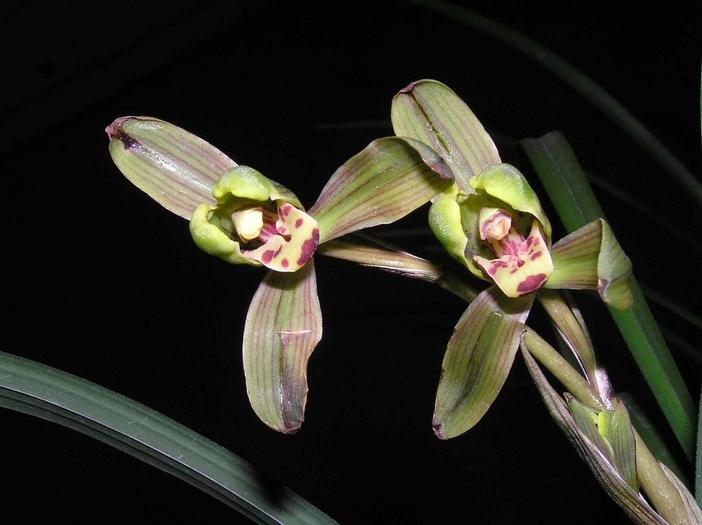Cold-Growing Cymbidium
(Cymbidium kanran)
Cold-Growing Cymbidium (Cymbidium kanran)
/
/

阿橋花譜 HQ Flower Guide
CC BY-SA 2.0
Image By:
阿橋花譜 HQ Flower Guide
Recorded By:
Copyright:
CC BY-SA 2.0
Copyright Notice:
Photo by: 阿橋花譜 HQ Flower Guide | License Type: CC BY-SA 2.0 | License URL: https://creativecommons.org/licenses/by-sa/2.0/ | Uploader: 阿橋 KHQ | Publisher: Flickr



















Estimated Native Range
Summary
Cymbidium kanran, commonly known as the cold-growing cymbidium, is a lithophytic orchid species that is native to the rocky forests and mountainous regions of East Asia, particularly China and Taiwan. It is particularly adapted to cold climates at altitudes of 2,300 to 5,900 feet where it experiences cool, moist conditions. This orchid typically produces a striking display of up to 12 fragrant, waxy, and long-lasting flowers per stem from October to January, with each bloom being a subtle shade of green, often with a white or pale yellow lip.
Cymbidium kanran has been cultivated for over 2,500 years, valued for its elegant flowers and resilience to cooler temperatures. It is a popular choice for cool greenhouses and indoor cultivation in temperate regions. In cultivation, it requires well-draining conditions, preferably in a mix designed for orchids, and it should be watered regularly but allowed to dry slightly between waterings. Bright, indirect light is optimal, avoiding direct sunlight that can scorch the leaves. This species is relatively low-maintenance, but it can be susceptible to root rot if overwatered or if the medium does not drain properly.CC BY-SA 4.0
Cymbidium kanran has been cultivated for over 2,500 years, valued for its elegant flowers and resilience to cooler temperatures. It is a popular choice for cool greenhouses and indoor cultivation in temperate regions. In cultivation, it requires well-draining conditions, preferably in a mix designed for orchids, and it should be watered regularly but allowed to dry slightly between waterings. Bright, indirect light is optimal, avoiding direct sunlight that can scorch the leaves. This species is relatively low-maintenance, but it can be susceptible to root rot if overwatered or if the medium does not drain properly.CC BY-SA 4.0
Plant Description
- Plant Type: Herb
- Height: 1-2 feet
- Width: 1-2 feet
- Growth Rate: Moderate
- Flower Color: Green, White
- Flowering Season: Winter
- Leaf Retention: Evergreen
Growth Requirements
- Sun: Part Shade
- Water: Medium
- Drainage: Medium, Fast
Common Uses
Potted Plant, Rock Garden
Natural Habitat
native to the rocky forests and mountainous regions of East Asia, particularly China and Taiwan
Other Names
Common Names: Winter-Flowering Cymbidium
Scientific Names: , Cymbidium kanran, Cymbidium kanran f. purpurascens, Cymbidium kanran f. viridescens, Cymbidium kanran subsp. purpurascens, Cymbidium kanran subsp. purpureohiemale, Cymbidium kanran var. aestivale, Cymbidium kanran var. latifolium, Cymbidium kanran var. purpureohiemale, Cymbidium linearisepalum
GBIF Accepted Name: